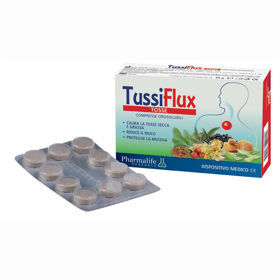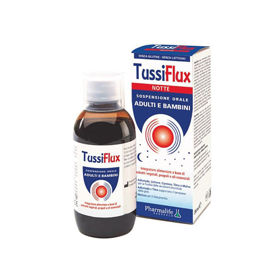Vprašanje stranke:
Kako prepoznati oslovski kašelj? Vprašanje anonimne stranke
Odgovor farmacevta:
Oslovski kašelj je značilna bakterijska okužba dihal, ki jo povzroča bakterija Bordetella pertussis. Prepoznavanje oslovskega kašlja temelji na prepoznavanju kombinacije znakov in simptomov, ki se pojavijo med potekom bolezni.
Ključni znaki in simptomi oslovskega kašlja vključujejo:
- Paroksizmalni kašelj: intenziven, neprekinjen kašelj, ki se pogosto pojavi v napadih (paroksizmi). Ti napadi kašlja so lahko tako močni, da povzročijo težave s dihanjem ali celo bruhanje.
- Težave z dihanjem: intenziven kašelj lahko povzroči težave z dihanjem ali kratko sapo.
- Splošno slabo počutje: bolniki z oslovskim kašljem se lahko počutijo izčrpane, utrujene ali imajo splošne bolečine v telesu.
- Neželeni simptomi: poleg kašlja lahko bolniki z oslovskim kašljem doživijo tudi druge simptome, kot so zamašen nos, izcedek iz nosu, kihanje, povišana telesna temperatura ali splošno slabo počutje.
- Bruhanje ali težave s hrano: intenziven kašelj lahko sproži bruhanje ali povzroči težave pri hranjenju.
Za potrditev diagnoze oslovskega kašlja lahko zdravnik opravi testiranje, kot je PCR test na prisotnost bakterije Bordetella pertussis v brisu iz nosu ali grla. Če sumite, da imate ali ste izpostavljeni oslovskemu kašlju, se posvetujte z zdravnikom. Zgodnje prepoznavanje in zdravljenje oslovskega kašlja je ključnega pomena za preprečevanje zapletov in preprečevanje širjenja okužbe na druge.
Kako ločiti oslovski kašelj od navadnega?
Oslovski kašelj, znan tudi kot kašelj pertusisa, je nalezljiva bolezen dihal, ki jo povzroča bakterija Bordetella pertussis. Ta bolezen je znana po nenadnih napadih intenzivnega kašlja, ki se lahko ponavljajo in trajajo tudi po več tednov. Poleg tega so značilni simptomi oslovskega kašlja tudi izcedek iz nosu, kihanje, utrujenost in vročina.
Ključna razlika med oslovskim kašljem in navadnim kašljem je v vzroku in poteku bolezni. Navaden kašelj, znan tudi kot akutni bronhitis, je običajno virusna okužba, ki prizadene dihalne poti. Simptomi navadnega kašlja so lahko podobni, vključno s suhim ali mokrim kašljem, vročino, bolečinami v prsih in izcedkom iz nosu, vendar običajno niso tako intenzivni ali dolgotrajni kot pri oslovskem kašlju.
Poleg tega je oslovski kašelj bolj nalezljiv kot navaden kašelj, zlasti v začetni fazi bolezni. Zato je pomembno, da se ljudje z oslovskim kašljem izolirajo in dobijo ustrezno zdravljenje, da tako preprečijo nadaljnje širjenje bolezni. Diagnosticiranje oslovskega kašlja običajno vključuje laboratorijske teste, kot so brisi nosu in žrela, za prepoznavanje bakterije Bordetella pertussis.
Vendar pa je pomembno poudariti, da so lahko simptomi oslovskega kašlja pri novorojenčkih, dojenčkih in mlajših otrocih manj očitni in se pogosto kažejo kot kratka sapa ali prenehanje dihanja, kar predstavlja resno življenjsko nevarnost. Zato je pomembno, da se otroci cepijo proti oslovskemu kašlju v skladu z nacionalnimi smernicami cepljenja, da bi preprečili to bolezen in tako zaščitili predvsem tiste, ki so najbolj ogroženi.
Ali lahko oslovski kašelj prepoznamo že preden postane nalezljiv?
Prepoznavanje je lahko izziv, saj se simptomi običajno začnejo pojavljati že nekaj dni ali tednov po izpostavitvi okužbi. Prvotni simptomi se lahko zlahka zamenjajo z običajnim prehladom ali drugimi virusnimi okužbami dihal, saj vključujejo izcedek iz nosu, kihanje, šibkost in suh kašelj. V začetni fazi bolezni, preden postane nalezljiva, je prepoznavanje oslovskega kašlja težavno, saj simptomi niso specifični.
Nalezljivost se povečuje, ko se pojavijo značilni simptomi, kot so paroksizmalni napadi kašlja, ki jih spremlja značilna hripavost ali piskanje dihanja ter težko dihanje nasploh. V tej fazi oslovskega kašlja je, preden ta postane nalezljiv, lahko ključnega pomena čas za preprečevanje širjenja bolezni. Če obstaja sum na oslovski kašelj, je priporočljivo, da se poišče zdravniško mnenje in opravi ustrezne diagnostične teste, kot so brisi nosu in žrela, za prepoznavanje bakterije Bordetella pertussis.
Poleg tega je cepljenje eden najpomembnejših načinov za preprečevanje. Redno cepljenje otrok in odraslih v skladu s priporočili zdravstvenih organov lahko pomembno zmanjša tveganje za okužbo in širjenje oslovskega kašlja v skupnosti.
Kako prepoznati oslovski kašelj pri otrocih?
Oslovski kašelj pri otrocih se lahko prepozna po naslednjih simptomih: paroksizmalni napadi intenzivnega kašlja, ki se lahko ponavljajo in trajajo več tednov, hripavost ali piskanje dihanja med napadi kašlja, težko dihanje, izcedek iz nosu, kihanje, utrujenost in vročina. Pri novorojenčkih in dojenčkih se lahko simptomi oslovskega kašlja kažejo kot kratka sapa ali prenehanje dihanja, kar je znak resne nevarnosti. Če obstaja sum na oslovski kašelj pri otroku, je pomembno poiskati zdravniško pomoč za diagnozo kot tudi za ustrezno zdravljenje.
Zanimivo branje: Oslovski kašelj pri starejših
Zanimivo branje: Kako izgleda oslovski kašelj?






 Facebook
Facebook
 Instagram
Instagram
 info@moja-lekarna.com
info@moja-lekarna.com

